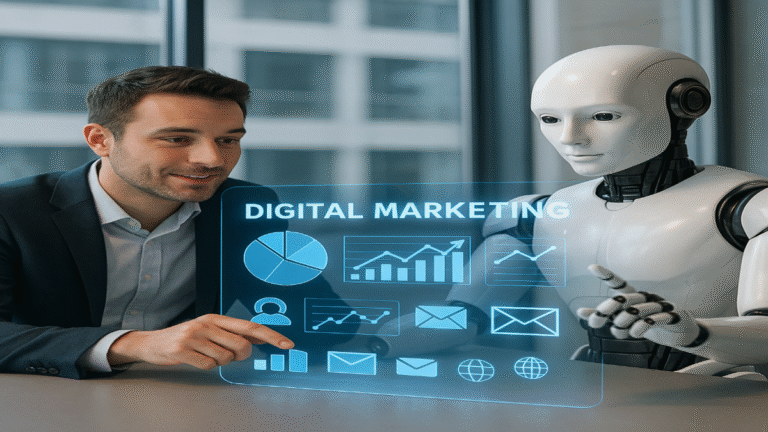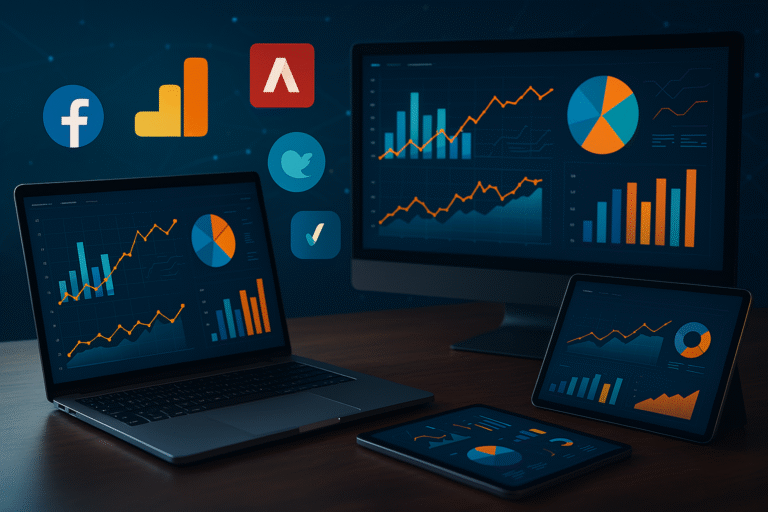Meta Description : Discover how Customer Data Platforms (CDPs) are reshaping digital marketing in a cookieless era by unifying first-party data for hyper-personalized customer experiences and compliance-ready strategies.
Introduction
The digital marketing landscape is undergoing a seismic shift. With third-party cookies fading into obsolescence—driven by privacy regulations like GDPR/CCPA and browser policies like Apple’s ITP and Google’s Privacy Sandbox—marketers face a critical challenge: how to deliver personalized experiences without compromising user privacy .
Enter Customer Data Platforms (CDPs) : the linchpin of modern marketing strategies in a cookieless world. By unifying fragmented first-party data into a single customer view, CDPs empower brands to create hyper-targeted, compliant, and impactful campaigns. This post explores why CDPs are rising to prominence, how they work, and how marketers can leverage them to thrive in a privacy-first era.
What Are Customer Data Platforms (CDPs)?
A Customer Data Platform (CDP) is a marketer-managed system that aggregates and unifies customer data from multiple sources—such as websites, apps, CRM systems, social media, and offline interactions—to create persistent, real-time customer profiles.
Key Features of CDPs :
- Data Ingestion : Collects structured and unstructured data from all touchpoints.
- Identity Resolution : Links disparate identifiers (email, device ID, phone number) to build unified profiles.
- Segmentation : Enables dynamic audience grouping based on behavior, demographics, or preferences.
- Activation : Integrates with advertising, email, and analytics tools to deliver personalized campaigns.
CDPs vs. CRMs vs. DMPs :
| Feature | CDPs | CRMs | DMPs |
|---|---|---|---|
| Data Type | First-party (detailed profiles) | First-party (transactional) | Third-party (anonymous) |
| Use Case | Personalization, retention | Sales pipeline management | Broad audience targeting |
| Persistence | Long-term profiles | Limited historical data | Temporary (30-90 days) |
Why CDPs Are Critical in a Cookieless World
1. The Death of Third-Party Cookies
Third-party cookies, once the backbone of digital advertising, are being phased out:
- Google delayed its Privacy Sandbox timeline but remains committed to deprecating cookies by mid-2024 .
- Safari and Firefox already block third-party cookies by default.
Impact on Marketers :
- Loss of cross-site tracking capabilities.
- Reduced ability to target and retarget anonymous users.
CDPs to the Rescue :
- Focus on first-party data collected directly from customers (e.g., website interactions, newsletter signups).
- Build persistent profiles that survive cookie deletion.
2. Rising Consumer Demand for Privacy
A 2023 Salesforce report found that 88% of consumers expect brands to protect their data. CDPs help marketers:
- Ensure compliance with GDPR, CCPA, and ePrivacy by centralizing consent management.
- Anonymize or delete data upon request, fulfilling “right to be forgotten” obligations.
3. Enhanced Personalization at Scale
CDPs enable hyper-personalization by combining behavioral, demographic, and contextual data. Example:
- An e-commerce brand uses a CDP to send abandoned cart reminders to users who browsed products but didn’t purchase, tailored to their browsing history.
4. Improved ROI Through Data-Driven Insights
By eliminating data silos, CDPs reduce wasted ad spend. A study by Forrester found that companies using CDPs saw:
- 20–30% higher conversion rates .
- 15–25% increase in customer lifetime value (CLV) .
How CDPs Work: A Step-by-Step Breakdown
- Data Collection :
- Gather data from websites (via SDKs/tags), mobile apps, POS systems, CRMs, and IoT devices.
- Capture both identifiable data (email, name) and behavioral data (page views, clicks, purchase history).
- Identity Resolution :
- Use deterministic (exact matches like email) or probabilistic (statistical patterns) methods to stitch data into unified profiles.
- Example: Linking a user’s desktop and mobile sessions to the same profile.
- Profile Enrichment :
- Append additional attributes, such as demographic details or predictive scores (e.g., churn risk, lifetime value).
- Dynamic Segmentation :
- Create real-time segments, like “high-intent shoppers” or “disengaged subscribers.”
- Activation :
- Sync segments with advertising platforms (Google Ads, Meta), email tools (Mailchimp), or personalization engines (Adobe Target).
Benefits of CDPs for Digital Marketers
- Hyper-Personalization :
- Deliver tailored content, product recommendations, and offers.
- Example: Netflix uses CDP-like systems to recommend shows, driving 80% of viewer activity .
- Cross-Channel Consistency :
- Ensure cohesive messaging across email, social, web, and in-store.
- Compliance Made Easier :
- Centralize consent management and data governance.
- Agility in Campaign Execution :
- Launch targeted campaigns in hours, not weeks.
- Customer Retention :
- Proactively engage at-risk customers with win-back offers.
Challenges in Adopting CDPs (And How to Overcome Them)
| Challenge | Solution |
|---|---|
| Data Quality Issues | Cleanse and validate data before ingestion. |
| Integration Complexity | Choose a CDP with pre-built integrations (e.g., Salesforce, HubSpot). |
| Cost and Scalability | Start with a modular CDP (e.g., Segment, Twilio Engage) and scale as needed. |
| Skill Gaps | Train teams or partner with CDP vendors for onboarding. |
Real-World Examples of CDP Success
Case Study 1: Sephora’s Loyalty-Driven CDP Strategy
Sephora leveraged a CDP to unify data from its loyalty program, website, and in-store purchases. Result:
- 2x increase in email engagement .
- Personalized product recommendations drove a 15% uplift in sales .
Case Study 2: The New York Times’ Subscription Growth
The NYT used a CDP to analyze reader behavior and optimize paywall strategies. Outcome:
- Over 10 million digital subscriptions by 2023.
- Dynamic content recommendations reduced bounce rates by 12%.
How to Choose the Right CDP for Your Business
- Define Your Goals :
- Focus on use cases like email personalization, ad targeting, or churn reduction.
- Evaluate Key Capabilities :
- Real-time data processing.
- AI/ML-driven insights.
- Pre-built integrations with your martech stack.
- Prioritize Ease of Use :
- Look for no-code interfaces for marketers (e.g., Salesforce CDP, Adobe Real-Time CDP).
- Check Compliance Features :
- Consent management, data anonymization, and audit trails.
- Compare Pricing Models :
- Tiered pricing (Segment), usage-based (AWS Pinpoint), or enterprise licenses (Oracle Unity).
The Future of CDPs in Digital Marketing
- AI-Powered Predictive Analytics : CDPs will predict customer behavior (e.g., next purchase date) with greater accuracy.
- Expansion Beyond Marketing : Integration with sales, customer service, and product teams for unified customer experiences.
- Decentralized Identity Solutions : Blockchain-based CDPs could let users own and share data securely.
Gartner predicts that 75% of enterprises will use CDPs by 2025 to accelerate revenue growth.
Conclusion
The shift to a cookieless world isn’t a threat—it’s an opportunity to build deeper, trust-based relationships with customers. Customer Data Platforms (CDPs) are the bridge to this future, enabling marketers to harness first-party data for personalized, compliant, and impactful campaigns.
By investing in a CDP today, brands can unlock actionable insights, boost ROI, and stay ahead in an era where privacy and personalization must coexist.




